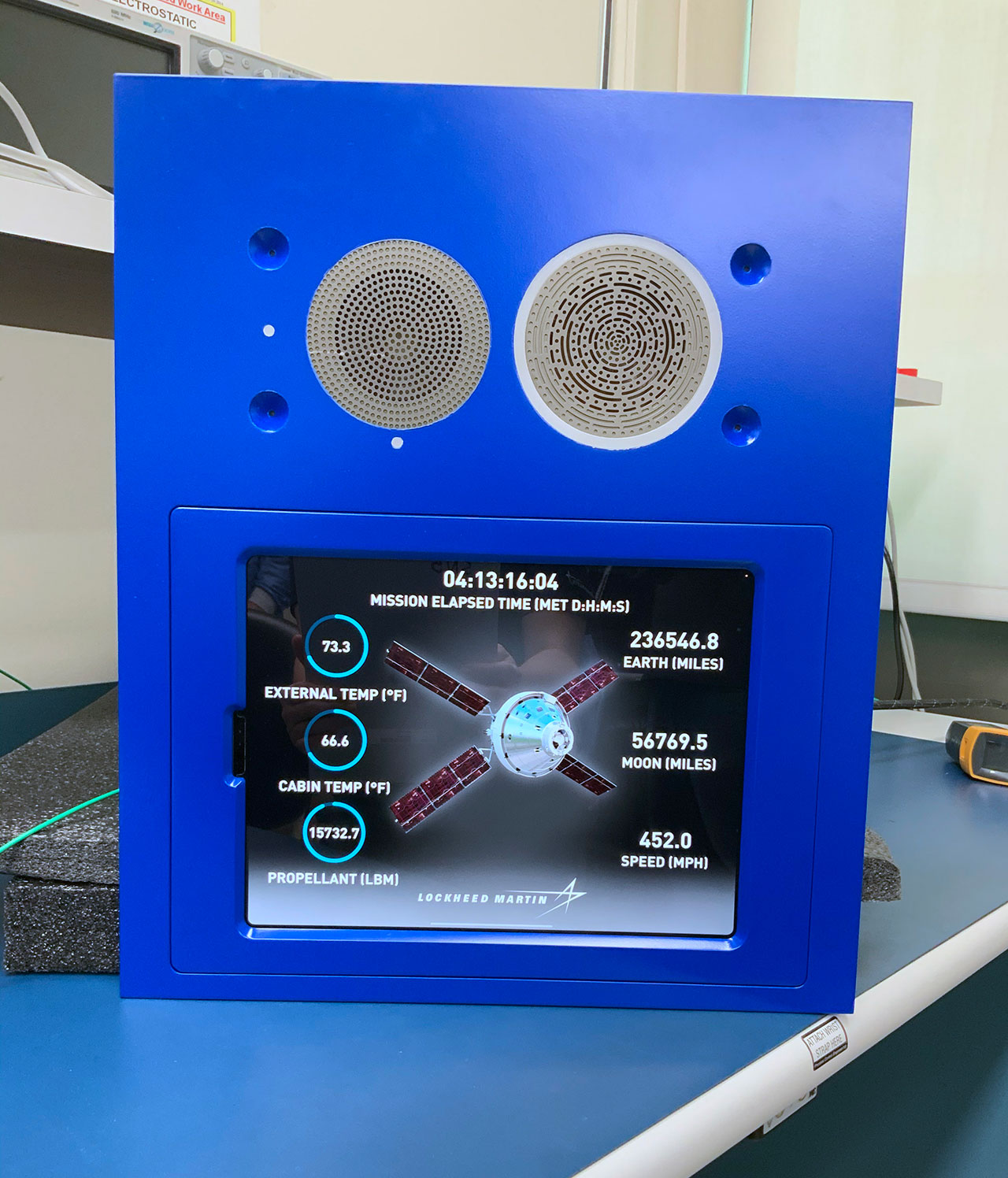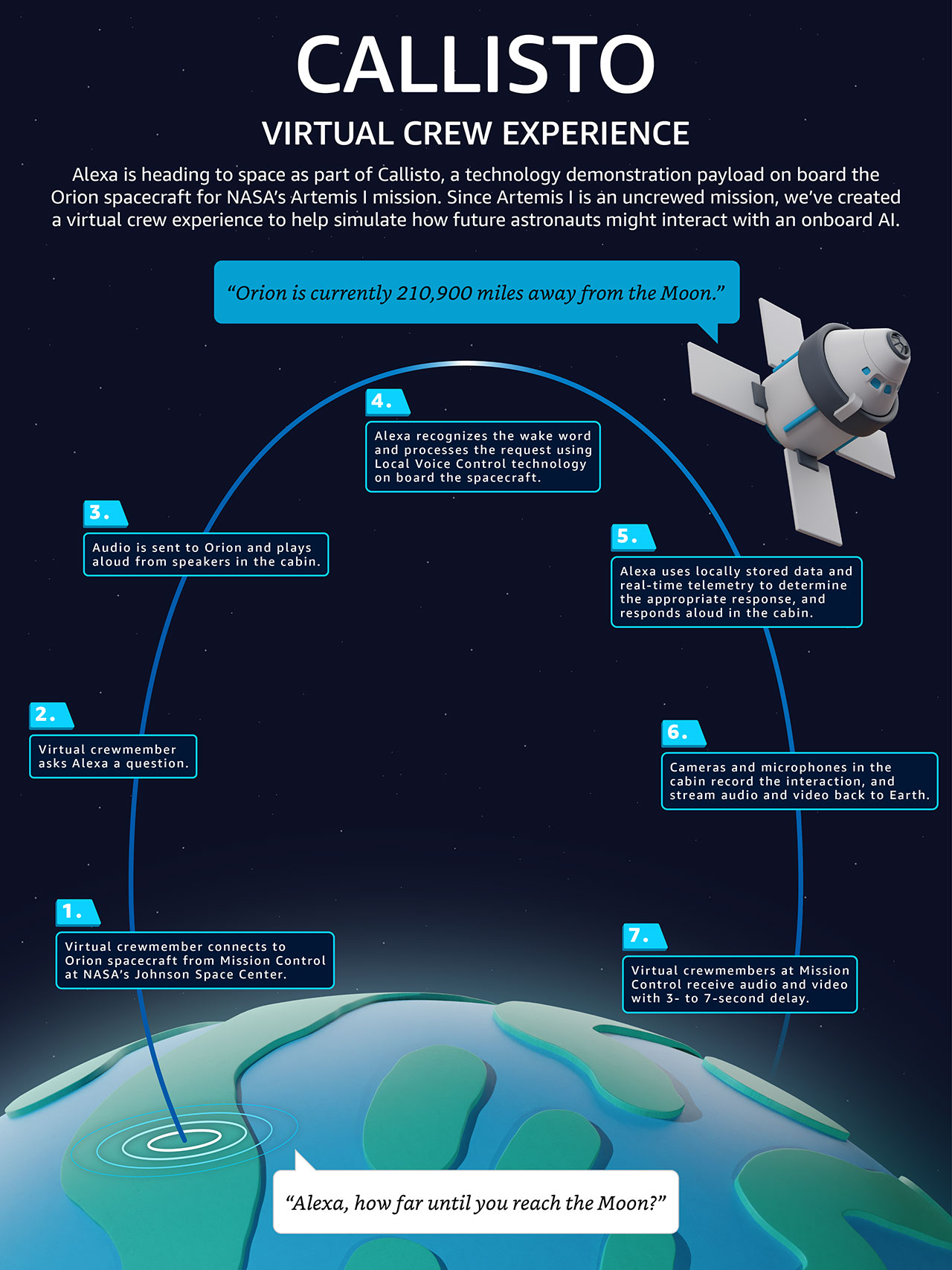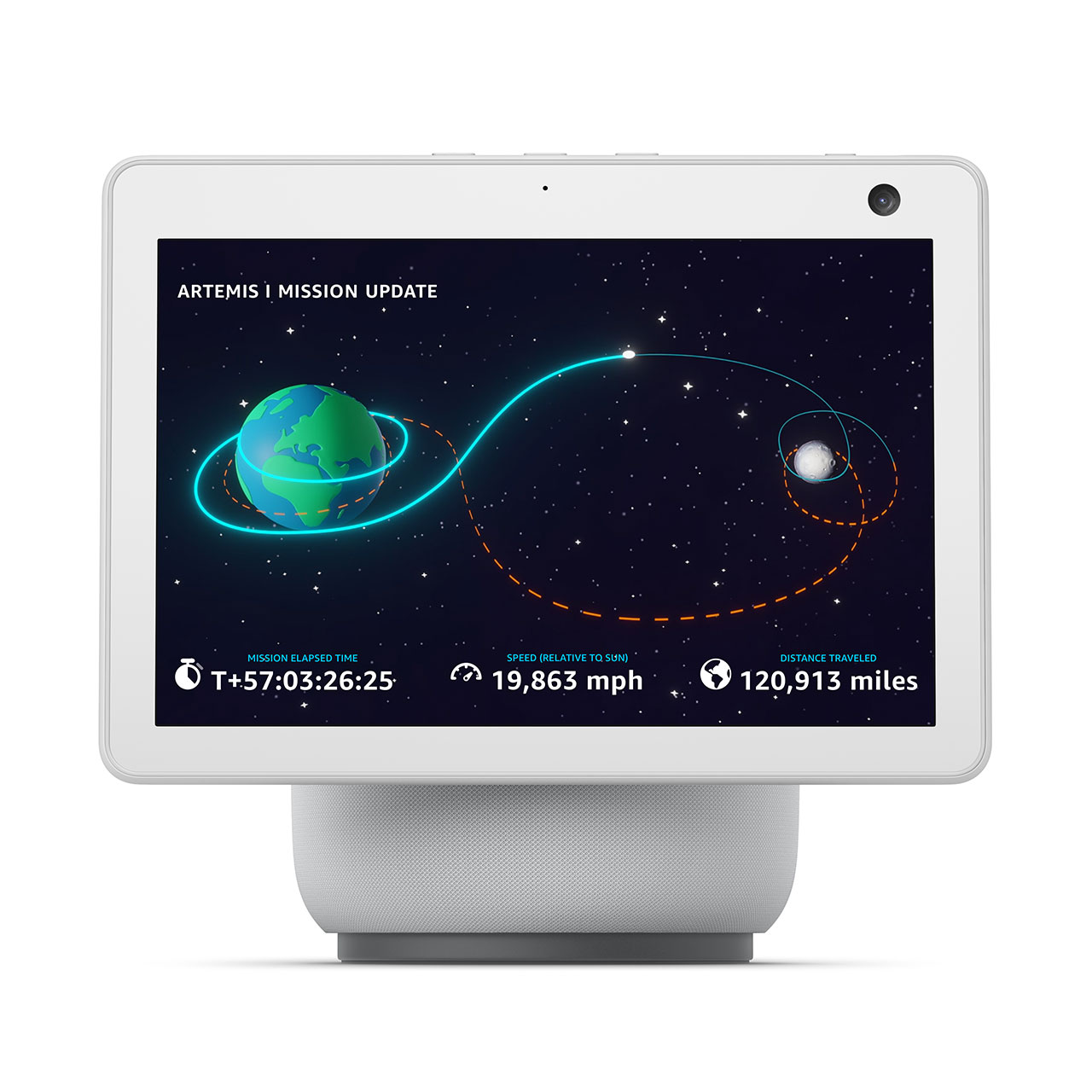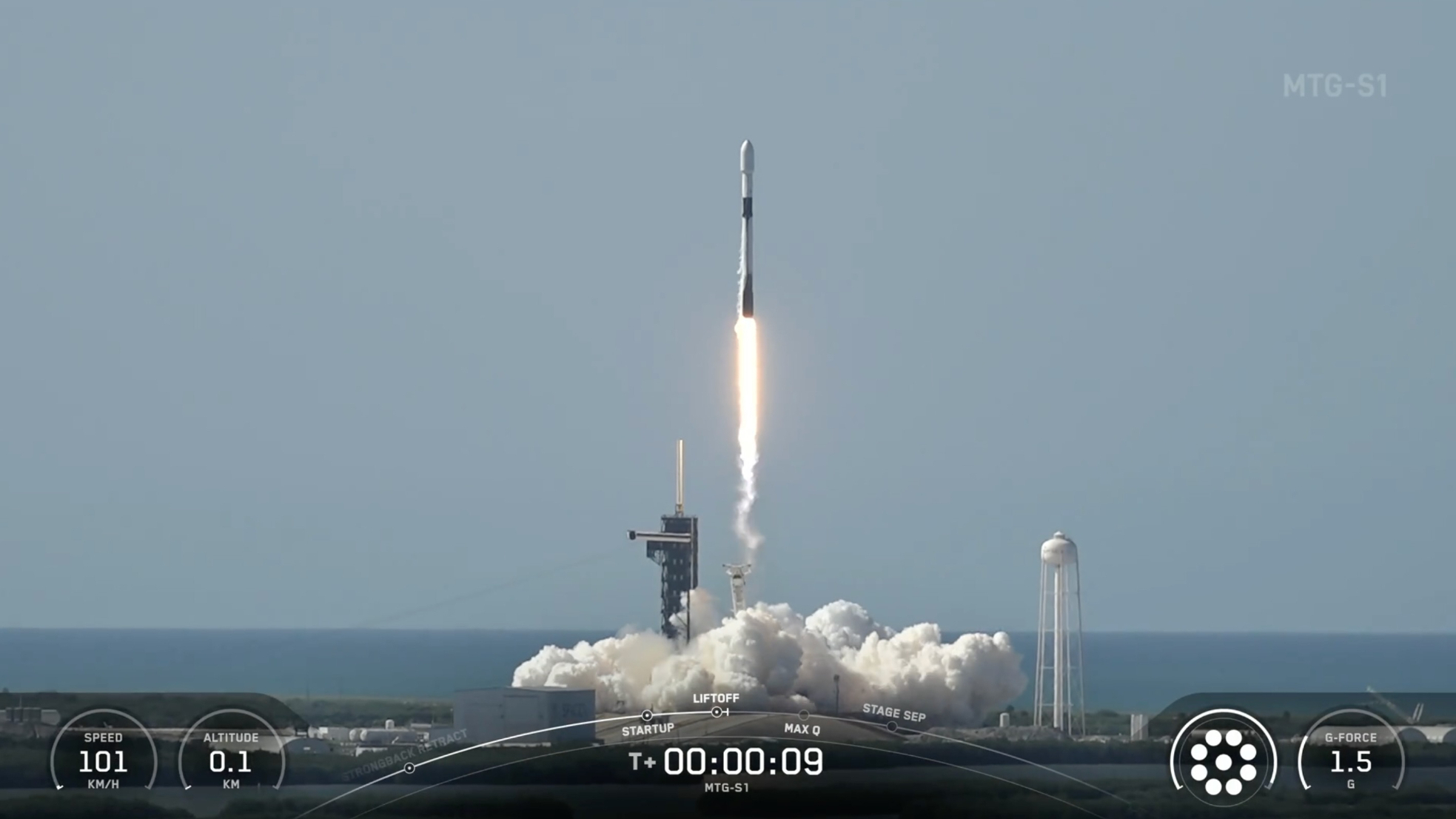'Alexa, take me to the moon': Amazon, Cisco Webex to fly on Artemis 1

Amazon's Alexa has a new feature: it can fly you to the moon.
The virtual assistant, which is more commonly used (on Earth) to control devices around your home, is set to launch on a journey around the moon aboard NASA's Artemis 1 mission later this year. Together with Cisco's Webex video conferencing platform, Alexa is part of "Callisto," a new far-field voice technology, AI and tablet-based video demonstration created with Lockheed Martin, the prime contractor for NASA's Orion spacecraft.
"Callisto will demonstrate a first-of-its-kind technology that could be used in the future to enable astronauts to be more self-reliant as they explore deep space," Lisa Callahan, vice president and general manager of commercial civil space for Lockheed Martin, said in a statement. "Callisto is a shining example of how new partnerships with commercial technologies can be flown on Orion to benefit future human deep space missions."
Named after a favorite companion of the Greek goddess Artemis — who in turn was the namesake for NASA's deep space exploration program, Callisto will test Alexa's ability to function without an internet connection and the capability to run Webex using NASA's Deep Space Network, all while both systems are aboard a spacecraft that is traveling hundreds of thousands of miles away from Earth.
In addition to interacting with flight controllers, Callisto will also enable students, families, space enthusiasts and the general public to engage with and virtually "ride along" with the Artemis 1 mission. Saying "Alexa, take me to the moon" within earshot of enabled devices will access mission updates, while Webex will provide opportunities for remote classroom and STEM (science, technology, engineering and mathematics) teaching events.
Where no virtual assistant has gone before
"The 'Star Trek' computer was part of our original inspiration for Alexa, so it's exciting and humbling to see our vision for ambient intelligence come to life on board Orion," said Aaron Rubenson, vice president of Amazon Alexa.
Similar to how the crew of the Starship Enterprise could ask the ship's intelligent computer for status updates (or trigger the occasional self-destruct command), Alexa, as part of Callisto, will be able to provide information on flight status and telemetry, including things like spacecraft orientation, water supply amounts and battery voltage levels. Alexa will also be able to control certain settings on board Orion, such as changing the temperature or the color of the lights.
Breaking space news, the latest updates on rocket launches, skywatching events and more!

Flying farther away from Earth than any previous human-rated spacecraft, Callisto on Orion will enable Alexa to operate without an internet connection, avoiding the 10 seconds or more delay needed to relay information from the moon to Earth and back (and up to 40 minutes roundtrip when astronauts reach Mars). Callisto uses Amazon's Local Voice Control, which allows Alexa to function in areas where there is limited to no connectivity.
Instead of sending information back to Earth to be processed in the cloud, Alexa will connect directly to Orion's computer and its own on board cloud of data. As such, Alexa will be able to access real-time telemetry data and respond quickly to thousands of mission-specific questions during the flight.
When needed, Callisto can also tap into the Deep Space Network, allowing Alexa to retrieve information from Earth, including news briefings and sports scores, to help crew members stay connected while still in deep space.
Without any astronauts aboard Artemis 1 — for this first mission, Orion will fly with a manikin and body mass simulators — Callisto will interact with virtual crew members instead.
Operators working in mission control at NASA's Johnson Space Center in Houston will be able to interact remotely with Callisto to test and demonstrate how the voice and video collaboration technologies can help future astronauts improve efficiency and situational awareness during a mission.
Long-distance video call
A custom version of Cisco's Webex video conferencing software will allow Callisto to host video calls between the Artemis 1 virtual crew members and the payload on board Orion.

"Through Callisto, Webex is enabling boundless video communications and collaboration in deep space. This first-of-its-kind solution could one day support future crewed missions, providing face-to-face interaction between crew, command center and loved ones," said Jeetu Patel, executive vice president and general manager of security and collaboration at Cisco.
Callisto will use Webex's latest video compression to improve quality and reduce bandwidth requirements during the mission. The Webex capability also includes a virtual whiteboard collaboration tool.
"Never before has this type of communication been possible," said Patel, "pushing the boundaries of hybrid work to the edges of space."
On future Artemis missions, Callisto may also be able to make the astronauts' jobs more enjoyable by allowing them to communicate with their families and friends.
"That direct interaction with a friendly face through video ... will be psychologically beneficial," said Rob Chambers, Lockheed Martin director of strategy for human spaceflight.
The Webex component of Callisto will also play back pre-recorded messages and videos designed to mark mission milestones.
'Alexa, take me to the moon'
When Artemis 1 launches, Callisto's Alexa and Webex features will allow the public an unprecedented view of the Orion's journey as the mission unfolds.
"Callisto is very photogenic," said Chambers, adding that the Orion spacecraft will have an array of cameras inside. "People will really feel like they are along for the ride."

Throughout the three-week flight, the Callisto team will invite special guests to join them in Houston and interact with Alexa as virtual crew members. Participants will include representatives from NASA and other leaders in the space and science community; students and teachers participating in "Amazon Future Engineer," the company's global philanthropic computer science education initiative; and others to be announced closer to the mission. Recordings of these virtual interactions will be shared across social and digital channels to provide the public with new ways to engage with the Artemis program.
Interactive experiences will also be added to Alexa-enabled products, including the Echo, Echo Dot, and Echo Show. Alexa will be able to provide its users with in-depth information on Artemis I, including telemetry data, videos and imagery from the mission (including a launch livestream) and reminders and notifications about key mission events.
Amazon is also creating "Alexa for Astronauts," a new Amazon Future Engineer program. The initiative will offer live virtual tours from Johnson Space Center and provide students with a first-hand look at the virtual crew experience and other facilities around mission control.
Alexa for Astronauts will include STEM curriculum provided by MIT App Inventor with the input of Amazon's partners, the National Science Teaching Association and Mobile CSP, allowing educators to dive deeper into computer science learning and the Artemis 1 mission with their classrooms.
The Alexa experiences will launch closer to the Artemis 1 mission, but a preview is available beginning today (Jan. 5) across Alexa-enabled devices. To get started, just say, "Alexa, take me to the moon."
Follow collectSPACE.com on Facebook and on Twitter at @collectSPACE. Copyright 2021 collectSPACE.com. All rights reserved.
Join our Space Forums to keep talking space on the latest missions, night sky and more! And if you have a news tip, correction or comment, let us know at: community@space.com.

Robert Pearlman is a space historian, journalist and the founder and editor of collectSPACE.com, a daily news publication and community devoted to space history with a particular focus on how and where space exploration intersects with pop culture. Pearlman is also a contributing writer for Space.com and co-author of "Space Stations: The Art, Science, and Reality of Working in Space” published by Smithsonian Books in 2018.In 2009, he was inducted into the U.S. Space Camp Hall of Fame in Huntsville, Alabama. In 2021, he was honored by the American Astronautical Society with the Ordway Award for Sustained Excellence in Spaceflight History. In 2023, the National Space Club Florida Committee recognized Pearlman with the Kolcum News and Communications Award for excellence in telling the space story along the Space Coast and throughout the world.

